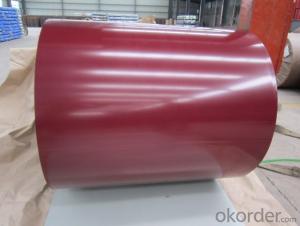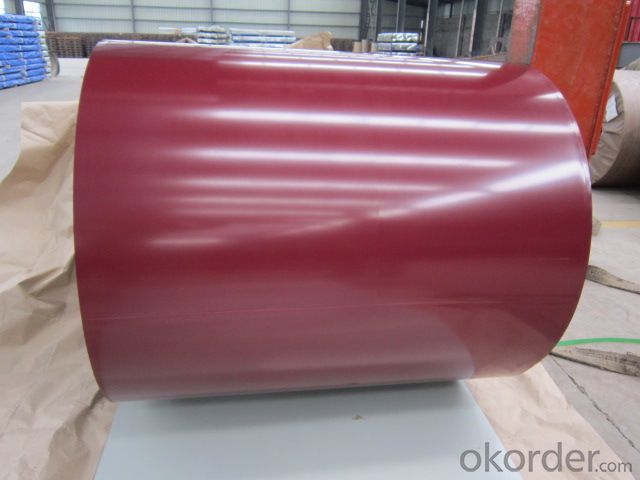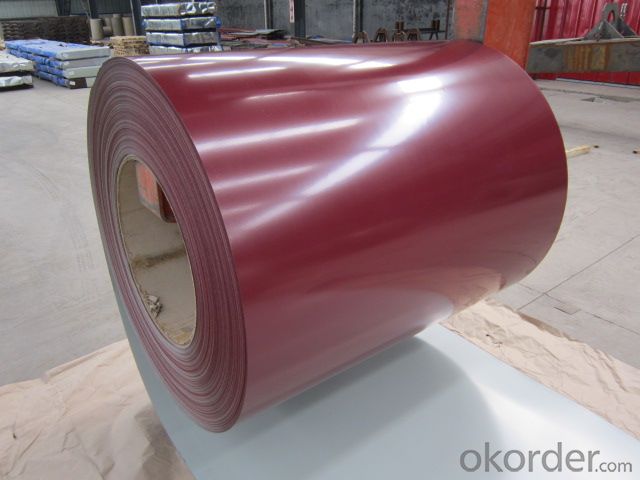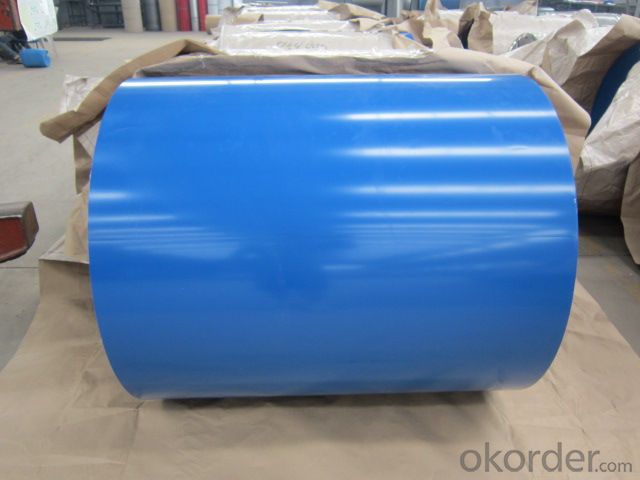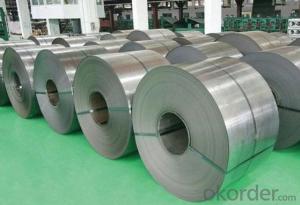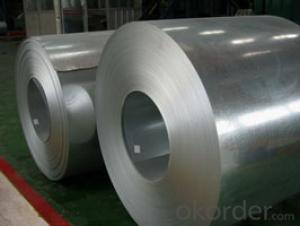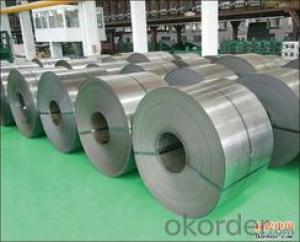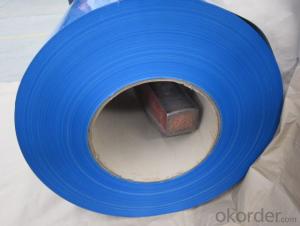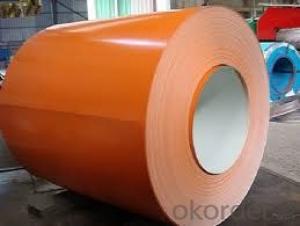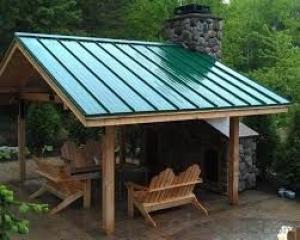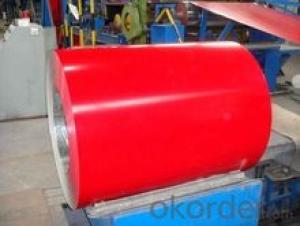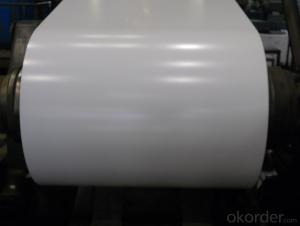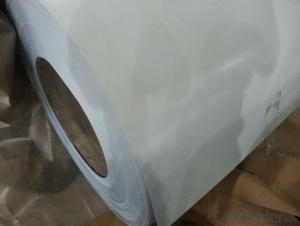Color Perpainted Galvanized Steel in Coil
- Loading Port:
- Shanghai
- Payment Terms:
- TT OR LC
- Min Order Qty:
- 25 m.t.
- Supply Capability:
- 10000 m.t./month
OKorder Service Pledge
OKorder Financial Service
You Might Also Like
Color Perpainted Galvanized Steel in Coil
Description:
The production process has evolved from one-coating-and-one-baking to double-coating-and-double-baking, and even three-coating-and-three-baking.
The base metals for Pre Painted Steel Coil consist of cold rolled, HDG electro-galvanized and hot-dip alu-zinc coated steel. The finish coats of Pre Painted Steel Coil can be classified into groups as follows: polyester, silicon modified polyesters, polyvinylidene fluoride, high-durability polyester, etc.
The Pre Painted Steel Coil can also be classified into groups by their surface textures, namely regular prepainted sheets, embossed sheets and printed sheets.
Application:
Suitable for indoor or outdoor decoration, color lasting for at least 10 years for outdoor using, could for roll forming., conditioning, micro-wave oven, bread maker,solar water heater,condencing apparatus,Blackboard, white board,chalkboard, hidden cell blackboard,bulletin board,Central heating slice, lampshade, chifforobe, desk, bed, locker, bookshelf,garbage can, billboard, typewriter, instrument panel, weight sensor, photographic equipment,coffin, fence, Prepainted Galvanized Steel Coil
Electrical appliance:Refrigerator, washer, switch cabinet, instrument cabinet, air
Product Specification:
Color pre painted steel in coil
Thickness: 0.3-0.8mm
Width: 914-1250mm
Inner Diameter: 508mm,610MM
Weight of Steel Coil: 3-8MT
Available Dipped Layer: 50-150g/m2
Coating Type: Al-Zn Alloy
Available Surface Treatment: Passivating & Oiling & AFP & Filming
Type of coating structure: 2/1 Coat the top surface of the steel sheet twice, coat the bottom surface once, and bake the sheet twice.
Front Side Paint Thickness: 15-25μm
Back Side Paint Thickness: 5-10μm
Standard:JIS G3312,CGCC
FAQ:
1.How about the color of the Pre Painted Steel Coil
The color of the Pre Painted Steel Coil has a very wide selection, like orange, cream-colored, dark sky blue, sea blue, bright red, brick red, ivory white, porcelain blue.
2.Could you tell me the package for the Pre Painted Steel Coil?
Usually Standard export seaworthy package: waterproof paper, steel trip packed and wooden case seaworthy package
3. Can you produce the goods according to the customer’s requirements?
Yes, of course, it can be customized according to customers requirements.
- Q: Can steel coils be used in the production of agricultural equipment?
- Yes, steel coils can be used in the production of agricultural equipment. Steel coils are often used as a raw material in the manufacturing of various agricultural equipment such as plows, planters, harvesters, and tillers. The high strength and durability of steel make it suitable for heavy-duty applications in agriculture. Additionally, steel coils can be easily shaped and formed into different parts and components required in agricultural machinery. The corrosion resistance of steel also ensures that the equipment can withstand harsh weather conditions and prolong its lifespan. Overall, the use of steel coils in the production of agricultural equipment helps in ensuring the reliability, longevity, and efficiency of the machinery used in farming operations.
- Q: What is the minimum thickness of a steel coil?
- The minimum thickness of a steel coil can vary depending on the specific grade and type of steel being used, as well as the manufacturing process. However, generally speaking, the minimum thickness of a steel coil is typically around 0.001 inches (0.0254 millimeters). It is important to note that this value is a general guideline and can vary based on the specific requirements and standards set by the industry or application.
- Q: How are steel coils used in the production of electrical connectors?
- Steel coils are used in the production of electrical connectors as they are often used as a raw material for manufacturing the connector pins. The steel coils are typically shaped and cut to specific dimensions to create the pins, which are then inserted into the connectors to establish electrical connections.
- Q: What are the different methods of cutting steel coils?
- There are several different methods of cutting steel coils, including shearing, slitting, and laser cutting.
- Q: How are steel coils used in the production of food processing machinery?
- Steel coils are used in the production of food processing machinery as they serve as a key component for constructing the machine's framework and structure. The coils provide durability, strength, and resistance to the machinery, ensuring its reliability and longevity in food processing operations.
- Q: How are steel coils used in the manufacturing of steering systems?
- Steel coils are used in the manufacturing of steering systems as they are shaped and formed into various components such as shafts, gears, and brackets. These components are crucial for ensuring the stability, strength, and functionality of the steering system.
- Q: How are steel coils used in the production of electrical relays?
- Steel coils are used in the production of electrical relays as they provide the necessary magnetic field required for the relay to function. When an electric current passes through the coil, it generates a magnetic field, which then attracts or repels the relay's switch mechanism. This coil-based mechanism allows relays to control the flow of electricity in various electrical circuits.
- Q: Can steel coils be stored in a corrosive environment?
- No, steel coils should not be stored in a corrosive environment as it can cause damage and corrosion to the coils, reducing their quality and durability over time.
- Q: How are steel coils inspected for thickness using ultrasonic testing?
- Ultrasonic testing is employed to inspect the thickness of steel coils, utilizing a non-destructive method. When conducting this process, a handheld ultrasonic thickness gauge is utilized to determine the thickness of the coil. The ultrasonic thickness gauge emits high-frequency sound waves that travel through the steel coil. These sound waves rebound from the opposite side of the coil, generating an echo. The time it takes for the echo to return to the gauge is measured and utilized to compute the coil's thickness. The gauge comprises a transducer responsible for emitting the sound waves and a receiver that detects the echoes. To ensure optimal acoustic contact between the transducer and the steel surface, the transducer is placed on the coil's surface, utilizing a coupling gel or oil. The transducer releases a brief burst of sound waves, which penetrate through the steel coil and reach the opposite side. If the sound waves encounter any variations or defects in the coil's thickness, they reflect back to the transducer. These echoes are detected by the receiver, and the time between the emission and reception of the sound waves is measured. By utilizing the known speed of sound in steel, the time taken for the sound waves to traverse the coil and return can be converted into a thickness measurement. This enables an accurate evaluation of the steel coil's thickness at different points. Ultrasonic testing is a dependable and efficient method for inspecting the thickness of steel coils. It permits swift measurements without causing any harm to the material, thereby making it ideal for quality control purposes and ensuring compliance with manufacturing specifications.
- Q: Are steel-capped boots safer than non-capped ones when working with horses? I have been told that sometimes if a horse steps on you, the steel crushing into your foot is more dangerous than if you just had normal wellies on, as at least with normal wellies there is some flexibility. Any horsey people out there got any experience with this? Thanks!
- Hey Bunny:) Glad you asked! I know of no one ,at all,that thinks steel toes are better than good reflexes and the ability to move faster! Wellies give flex,Sport shoes give speed, Jods(Paddocks) are the work boot of choice..and if there is one thing we know about horses, nothing happens in slo-mo! There is a fiberglass toe protector a person could use.. I guess..not this person though. Added to the factor that they have that bumpy sole not suited for riding, and a bad heel, and are just plain too heavy. And ankles! nothing special there. My flatmate(roomie) is an Equine reproduction Vet and a Polo Player, and no-one there has anything but jods and wellies. No clunky boots please:) Come to think of it, its been years since Ive mashed a foolish toe..and that takes into account trailering vetting and young-stock work....Yes I vote for movement over safety ** there are no horse-goods for sale with toe caps ** Three cheers for mobility bunny! (and wellies disinfect real nice too)
Send your message to us
Color Perpainted Galvanized Steel in Coil
- Loading Port:
- Shanghai
- Payment Terms:
- TT OR LC
- Min Order Qty:
- 25 m.t.
- Supply Capability:
- 10000 m.t./month
OKorder Service Pledge
OKorder Financial Service
Similar products
Hot products
Hot Searches
Related keywords
